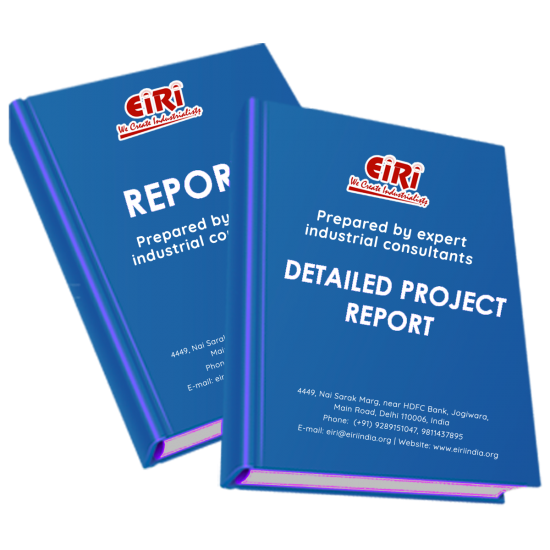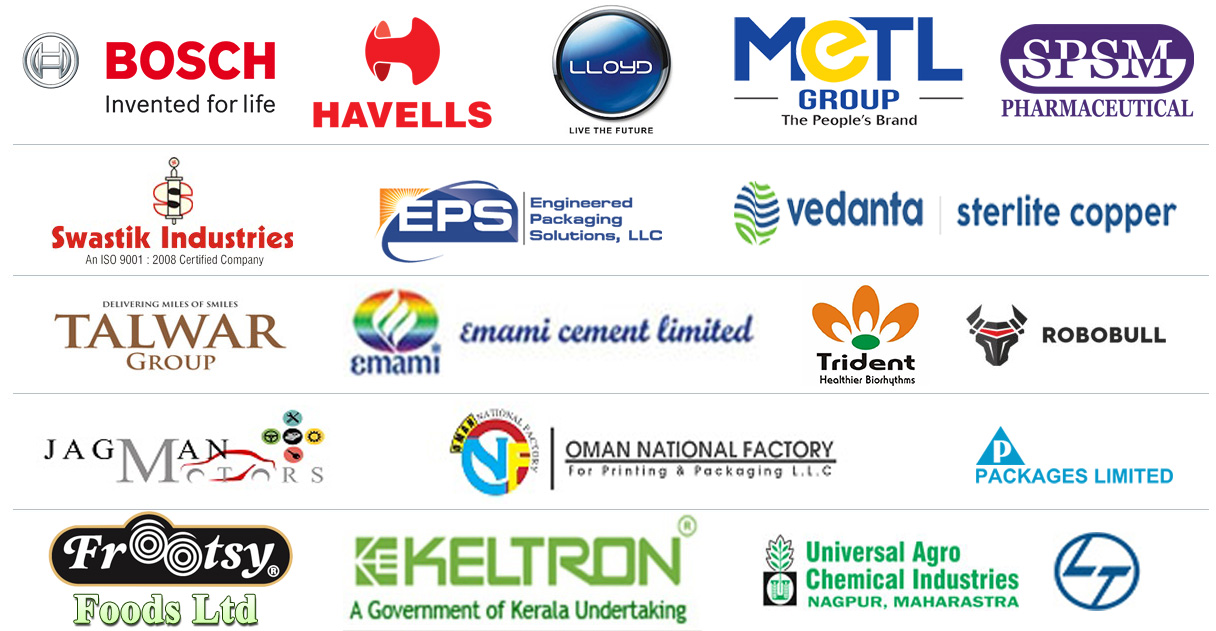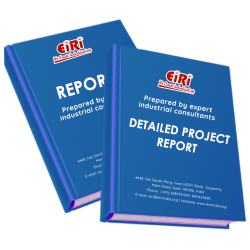Detailed Project Report on tea & coffee processing and packaging

- More than 40 years of experience
- Managed by expert industrial consultants
- ISO 9001-2015 Certified
- Registered under MSME, UAM No: DL01E0012000
- 24/5 Research Support
Get your quesries resolved from an industry expert. Ask your queries before report or book purchase. - Custom Research Service
Speak to the our consultant to design an exclusive study to serve your research needs. - Quality Assurance
All reports are prepared by highly qualified consultants & verified by a panel of experts. - Information Security
Your personal & confidential information is safe & secure.
TEA & COFFEE PROCESSING AND PACKAGING
[CODE NO. 2015]
The origin of tea is lost in ancient history, although legend dates it at about 2700 BC. The first generally accepted reference to tea is found in a Chinese dictionary from 350 AD which stated that the beverage was used as a medicine for various ils . Tea achieved popularity in the west only during the late seventeenth and eighteenth centuries, although it was brought to Europe in 1559.The first public sale of tea in England was held in 1657. The beverage's popularity grew, and its trade became an economic mainstay. Today, tea is arguably the most popular beverage in the world.
Black and green tea is the two main types, defined by their respective manufacturing techniques. Green tea is consumed mostly in Japan, China, North Africa and the Middle East; the remainder of the world uses black tea. Oolong tea, found in sorne regions of China, is an intermediate variant between black and green tea. Black and Green teas as lightly flavoured with other botanicals are sometimes seen; these include jasmine tea, scented with jasmine blossoms, and Earl Grey tea, flavoured with bergamot, a type of citrus fruit as lightly flavoured with other botanicals are sometimes seen; these include jasmine tea, scented with jasmine blossoms, and Earl Grey tea, flavoured with bergamot, a type of citrus fruit.
Tea is cultivated primarily in the Asian countries, and world's largest producers of tea are India, Sri Lanka, and China. In China, tea has been grown since the earliest times and the plant is native to this country.
The botanical name Camellia sinensis refers to the tea plant. However, the plant has a many different varieties, or subspecies which are also cultivated and used in a similar manner. At one time in history, there was significant confusion over whether one or more species of the tea plant existed in nature. However, this issue was cleared up in 1958, when a botanical international agreement was reached and now the prevailing classification is of one species having several varieties or subspecies, among these varieties, at least two types have very important commercial impact.
The tea plant is similar to the coffee plant, in that it is an evergreen tree or bush which grows chiefly in the tropics or in subtropical regions of the world. Tea plants require regular but moderate rainfall and the best teas grow in areas with elevated altitudes lying between 2,000 and 6,500 feet. The Assam tea is commercially the most cultivated of all varieties, the Assam tea, or var. assamica, has this distinction because it thrives best in tropical areas and has low resistance to cold climes. Yielding lower quantities of tea when compared to the Assam tea, the China tea, or var. sinensis, however is considered to produces a much more delicately flavored beverage and it is prized for this reason. The Chinese variety is also able to withstand much colder temperatures than the Assam variety at least for brief periods and thus can be grown at higher altitudes. Tea cultivation also reached the new world, during the 1800s, the China tea variety was cultivated as a major plant in the state of South Carolina, however, high labor costs made the plantations economically unsound and such attempts were abandoned. The plants still survive in this area to this day, though not cultivated in any large scale or commercially.
COST ESTIMATION
Plant Capacity 4.00 MT./day
Land & Building (5000 Sq.Mtr) Rs.5.28 Cr
Plant & Machinery Rs.1.84 Cr
W.C. for 2 Months Rs. 6.59 Cr
Total Capital Investment Rs. 14.26 Cr
Rate of Return 67%
Break Even Point 26%
INTRODUCTION
PROPERTIES
TEA GROWING AND PROCESSING:-
APPLICATION & USES OF TEA EXTRACT
EXTRACTION AND ISOLATION OF CAFFEINE FROM TEA LEAVES
FIGURE 3. STRUCTURE OF CELLULOSE.
PROTEINS AND PIGMENTS
MARKET POSITION OF TEA INDUSTRY
MEDIUM TERM OUTLOOK TO 2023
DETAILED EXPORT DATA OF BULK TEA
PRESENT MANUFACTURERS
PROCESSING
WITHERING PROCESSES OCCURRING IN THE GREEN LEAF
LEAF HANDLING FROM THE FIELD TO THE FACTORY
TEA PACKAGING
CTC TEA MANUFACTURING - PROCESS FLOW DIAGRAM
COFFEE
MARKET POSITION OF COFFEE
COFFEE EXPORT VOLUMES WORLDWIDE IN DECEMBER 2015,
BY LEADING COUNTRIES (IN 1,000 60-KILO SACKS)
PRESENT MANUFACTURERS OF COFFEE
TOP COFFEE BRANDS IN INDIA
THE COFFEE SEED
PRODUCTION OF COFFEE AND COFFEE-BASED BEVERAGES
STEAM-TREATED AND MONSOONED COFFEES
COFFEE ROASTING
COFFEE BREWING
NATURAL COFFEE CONSTITUENTS
GREEN COFFEE CHEMICAL COMPOSITION
VOLATILE COMPOUNDS IN GREEN COFFEE
CHANGES IN COFFEE CHEMICAL COMPOSITION DURING ROASTING
VOLATILE COMPOUNDS IN ROASTED COFFEE
CHANGES IN COFFEE CHEMICAL COMPOSITION DURING
SPECIAL COFFEE PROCESSING
CHEMICAL COMPOSITION OF COFFEE BREW
INCIDENTAL COFFEE CONSTITUENTS
POLYCYCLIC AROMATIC HYDROCARBONS
PESTICIDE RESIDUES
CONCLUDING REMARKS
INSTANT COFFEE PRODUCTION PROCESS
PROCESSING: SCHEMATIC OVERVIEW
RESIDUES GENERATED IN THE COFFEE INDUSTRY
COFFEE INDUSTRY RESIDUES APPLICATIONS
COFFEE SILVERSKIN (CS)
SPENT COFFEE GROUNDS (SCG)
PROPOSED UTILIZATION OF COFFEE INDUSTRIAL RESIDUES
SUPPLIERS OF COFFEE PROCESSING PLANT & EQUIPMENTS
SUPPLIERS OF TEA PROCESSING PLANT & EQUIPMENTS
MANUFACTURERS/SUPPLIERS OF PLANT & MACHINERY
SPRAY DRYERS
SUPPLIERSOF RAW MATERIALS
APPENDIX – A :
1. COST OF PLANT ECONOMICS
2. LAND & BUILDING
3. PLANT AND MACHINERY
4. FIXED CAPITAL INVESTMENT
5. RAW MATERIAL
6. SALARY AND WAGES
7. UTILITIES AND OVERHEADS
8. TOTAL WORKING CAPITAL
9. COST OF PRODUCTION
10. PROFITABILITY ANALYSIS
11. BREAK EVEN POINT
12. RESOURCES OF FINANCE
13. INTEREST CHART
14. DEPRECIATION CHART
15. CASH FLOW STATEMENT
16. PROJECTED BALANCE SHEET
How to Make Project Report?
Detailed Project Report (DPR) includes Present Market Position and Expected Future Demand, Technology, Manufacturing Process, Investment Opportunity, Plant Economics and Project Financials. comprehensive analysis from industry covering detailed reporting and evaluates the position of the industry by providing insights to the SWOT analysis of the industry.
Each report include Plant Capacity, requirement of Land & Building, Plant & Machinery, Flow Sheet Diagram, Raw Materials detail with suppliers list, Total Capital Investment along with detailed calculation on Rate of Return, Break-Even Analysis and Profitability Analysis. The report also provides a birds eye view of the global industry with details on projected market size and then progresses to evaluate the industry in detail.
We can prepare detailed project report on any industry as per your requirement.
We can also modify the project capacity and project cost as per your requirement. If you are planning to start a business, contact us today.
Detailed Project Report (DPR) gives you access to decisive data such as:
- Market growth drivers
- Factors limiting market growth
- Current market trends
- Market structure
- Key highlights
Overview of key market forces propelling and restraining market growth:
- Up-to-date analyses of market trends and technological improvements
- Pin-point analyses of market competition dynamics to offer you a competitive edge major competitors
- An array of graphics, BEP analysis of major industry segments
- Detailed analyses of industry trends
- A well-defined technological growth with an impact-analysis
- A clear understanding of the competitive landscape and key product segments
Need Customized Project Report?
- Ask for FREE project related details with our consultant/industry expert.
- Share your specific research requirements for customized project report.
- Request for due diligence and consumer centric studies.
- Still haven't found what you're looking for? Speak to our Custom Research Team
About Engineers India Research Institute:
Note: We can also prepare project report on any subject based on your requirement and country. If you need, we can modify the project capacity and project cost based on your requirement.
Our Clients

Our Approach
- Our research reports comprehensively cover Indian markets (can be modified as per your country), present investigation, standpoint and gauge for a time of five years*.
- The market conjectures are produced on the premise of optional research and are cross-accepted through associations with the business players
- We use dependable wellsprings of data and databases. What's more, data from such sources is handled by us and incorporated into the report
Why buy EIRI reports?
- Our project reports include detailed analysis that help to get industry Present Market Position and Expected Future Demand.
- Offer real analysis driving variables for the business and most recent business sector patterns in the business
- This report comprehends the present status of the business by clarifying a complete SWOT examination and investigation of the interest supply circumstance
- Report gives investigation and top to bottom money related correlation of real players/competitors
- The report gives gauges of key parameters which foresees the business execution





















